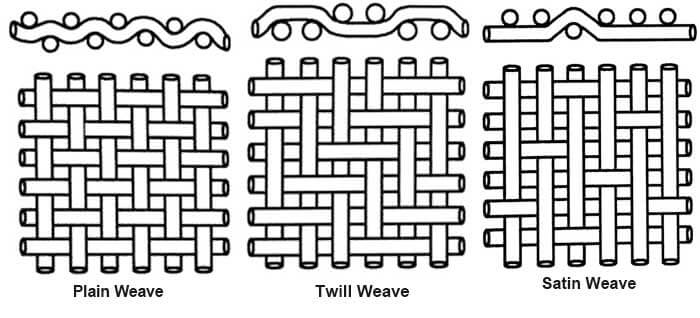The weaving structure of the filter fabric affects its regenerative capacity, service life, and other performance. Plain, twill and satin are common fabric weaves. The filter cloth should have plain weave for tight fabric, twill and satin weave for thick fabric. So how to choose it? What's the difference? Today, Bolian will explain the characteristics and distinctions of these three types of fabric.
Plain Filter Cloth
In plain weave, the warp and weft yarns interlace every other yarn. Plain weave filter cloth has a high number of interlacing points, making it dense and with a smooth surface. The appearance is the same on both sides, and it is relatively lightweight with good air permeability. The plain structure results in a lower density. Generally, plain weave fabrics are more affordable, though some can be more expensive.
Twill Filter Cloth
In twill weave, the warp and weft yarns interlace at least two yarns apart. This method adds warp and weft interlacing points, altering the fabric's structural pattern. Twill filter cloth is easier to identify because the interlacing points form diagonal lines at a certain angle on the fabric's surface. Its characteristics include a clear distinction between the front and back sides, fewer interlacing points, longer floating yarns, a soft hand feel, higher density, and a thicker, more three-dimensional structure.
Satin Filter Cloth
In satin weave, the warp and weft yarns interlace at least three yarns apart. It has the highest density, is the thickest, and has a smoother and more delicate surface, with a glossy appearance. However, it comes at a higher cost due to the complexity of the satin weaving process. The warp and weft yarns are only interlaced in a floating manner, covering the surface. The longer floating yarns give the fabric a better sheen, reflecting light easily. As a result, 100% cotton satin weave filter cloth will have a glossy appearance upon close inspection. However, the longer floating yarns in satin weave are more prone to wear, pilling, or fiber pull-out. Thus, the strength of satin weave fabric is lower than that of plain and twill weave filter cloths. Satin weave fabric with the same yarn count has higher density and is thicker, making it more costly.

Plain, twill, and satin weaves are the three most basic interlacing methods for warp and weft threads. There is no absolute distinction between good and bad, but from a craftsmanship perspective, satin weave is considered a premium fabric among cotton textiles, while twill weave is more commonly accepted by most people.